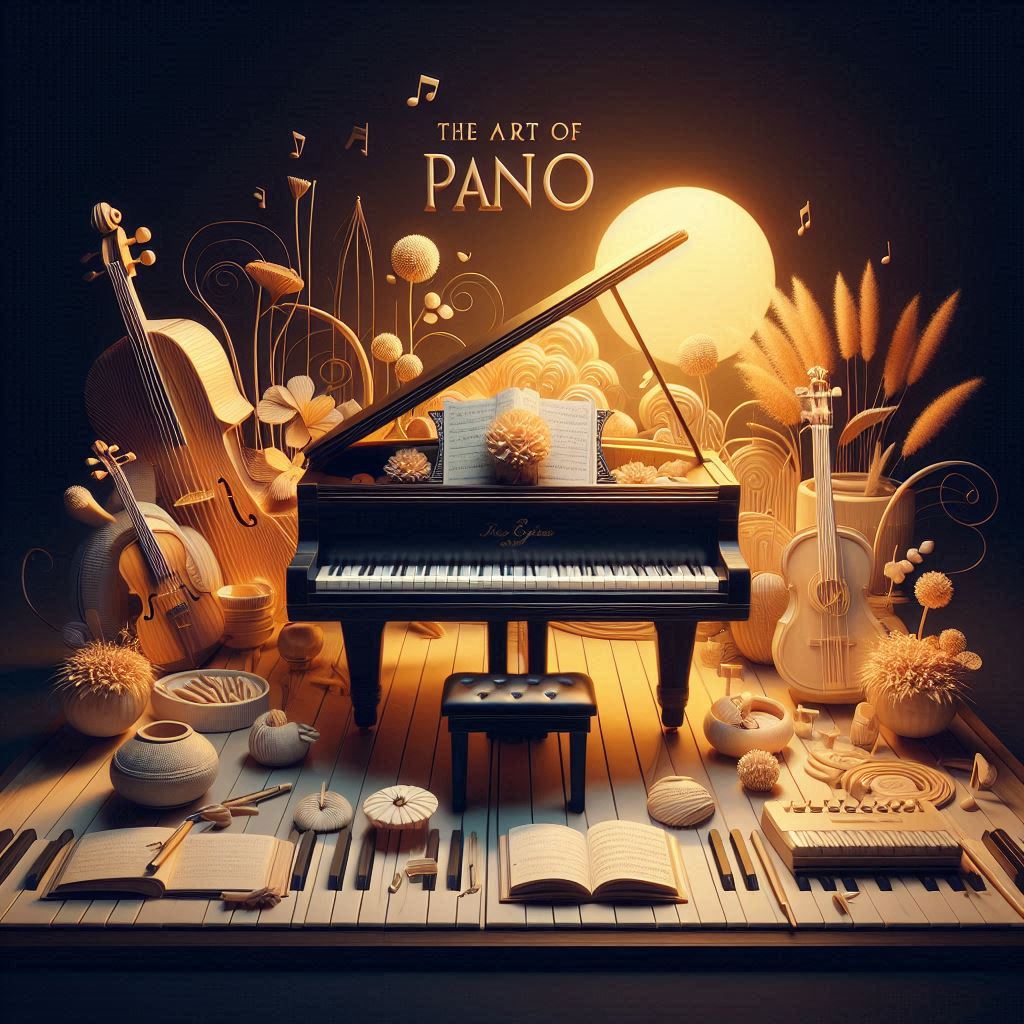Introduction
Reading piano sheet music can seem daunting for beginners, but with patience and practice, it becomes an invaluable skill that opens up a world of musical possibilities. This guide breaks down the basics of reading piano sheet music, providing clear explanations and practical tips to help you get started on your musical journey.
Thank you for reading this post, don't forget to subscribe!Understanding the Basics of Musical Notation
The staff is the foundation of musical notation, consisting of five horizontal lines and four spaces. Each line and space represents a different musical pitch.
The Clefs
Treble Clef
The treble clef, also known as the G clef, is used for higher-pitched notes. It is typically played with the right hand. The treble clef circles around the G line on the staff, indicating where the note G is located.
Bass Clef
The bass clef, or F clef, is used for lower-pitched notes and is typically played with the left hand. The two dots of the bass clef surround the F line on the staff, indicating the position of the note F.
Notes and Rests
Notes
Notes represent the pitch and duration of a sound. The position of a note on the staff indicates its pitch, while the shape of the note (whole, half, quarter, etc.) indicates its duration.
Rests
Rests indicate periods of silence in the music. Like notes, rests have different shapes to indicate their duration (whole rest, half rest, quarter rest, etc.).
Learning the Notes on the Piano
Treble Clef Notes
In the treble clef, the lines from bottom to top represent the notes E, G, B, D, and F, often remembered with the mnemonic “Every Good Boy Does Fine.” The spaces spell out the word “FACE,” representing the notes F, A, C, and E.
Bass Clef Notes
In the bass clef, the lines from bottom to top represent the notes G, B, D, F, and A, remembered by the phrase “Good Boys Do Fine Always.” The spaces represent the notes A, C, E, and G, remembered with “All Cows Eat Grass.”
Middle C
Middle C is a central note on the piano that connects the treble and bass clefs. It is located on a ledger line between the two staffs and is a crucial reference point for beginners.
Understanding Key Signatures
Sharps and Flats
Key signatures are indicated at the beginning of a piece of music, right after the clef. They consist of sharps (#) or flats (b) that apply to specific notes throughout the piece.
Major and Minor Keys
Each key signature represents a major or minor key. Learning to recognize key signatures helps you understand the overall tonality of a piece and which notes are altered by sharps or flats.
Understanding Time Signatures
Common Time Signatures
Time signatures appear at the beginning of a piece of music, after the key signature. They consist of two numbers: the top number indicates how many beats are in a measure, and the bottom number indicates the note value that represents one beat.
4/4 Time
Also known as common time, 4/4 time means there are four beats in a measure, and a quarter note receives one beat.
3/4 Time
In 3/4 time, there are three beats in a measure, and a quarter note receives one beat. This time signature is often used in waltzes.
2/4 Time
In 2/4 time, there are two beats in a measure, and a quarter note receives one beat. It is commonly used in marches and polkas.
Counting and Clapping Rhythms
Understanding time signatures is crucial for maintaining a steady rhythm. Practice counting and clapping rhythms to internalize the beat and improve your timing.
Reading and Playing Your First Piece
Starting Simple
Begin with simple pieces that use basic rhythms and stay within a small range of notes. This allows you to focus on reading the notes and developing a steady rhythm.
Hands Separately
Practice each hand separately at first. This helps you become familiar with the notes and rhythms for each hand before combining them.
Slow Practice
Start at a slow tempo, ensuring accuracy in notes and rhythms. Gradually increase the tempo as you become more comfortable with the piece.
Tips for Effective Practice
Consistent Practice
Regular, consistent practice is key to improving your sheet music reading skills. Aim to practice daily, even if it’s just for a short period.
Use a Metronome
A metronome helps you maintain a steady tempo and develop a sense of timing. Start at a slow tempo and gradually increase the speed as you become more confident.
Sight-Reading
Sight-reading involves playing a piece of music you haven’t seen before. This practice helps improve your ability to quickly read and interpret sheet music.
Learn Music Theory
Understanding music theory enhances your ability to read and interpret sheet music. Study topics such as scales, chords, and harmonic progressions to deepen your musical knowledge.
FAQs
What is the first step in learning to read piano sheet music?
The first step is to become familiar with the staff, clefs, and the basic note values. Understanding how these elements work together will provide a solid foundation for reading sheet music.
How long does it take to learn to read piano sheet music?
The time it takes varies depending on individual practice habits and prior musical experience. With regular practice, most beginners can start reading simple sheet music within a few months.
Do I need to learn music theory to read sheet music?
While it’s not strictly necessary, learning music theory can significantly enhance your understanding of sheet music and improve your overall musical abilities.
What are some good resources for beginners learning to read piano sheet music?
There are many resources available, including beginner piano books, online tutorials, and apps designed to help you practice reading sheet music.
Can I learn to read sheet music without a teacher?
Yes, it’s possible to learn on your own with the help of books, online resources, and practice. However, a teacher can provide valuable guidance, feedback, and personalized instruction.
Why is it important to learn both treble and bass clefs?
Learning both clefs is essential because piano music often requires you to read and play notes in both the higher and lower ranges of the instrument simultaneously.
Conclusion
Learning to read piano sheet music is a rewarding skill that opens up a world of musical possibilities. By understanding the basics of musical notation, practicing regularly, and utilizing helpful resources, you can develop the ability to read and play beautiful piano music. Remember to be patient with yourself, and enjoy the journey of discovering the rich world of piano music.



